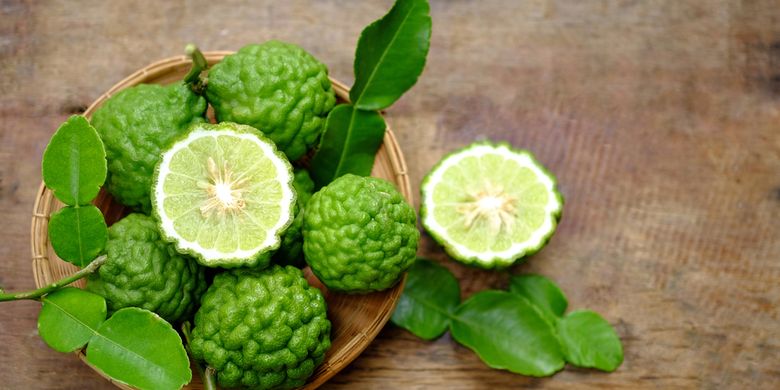Red snappers are one of the demersal fishes widely found in Indonesian marine waters. It is consumed by many people, and it has high economic value. In 2007, the production of red snappers in Indonesia was 116.994 tons with an average increase of 4.83% each year for export commodities (Kelautan and Indonesia, 2018). Basically, red snappers have a relatively higher growth rate, compared to other marine fish. It is a fishery commodity that has the prospect of supporting cultivation development in the future (Dance and Rooker, 2019).
Red Snappers contain high content protein and water which makes them highly perishable. To fulfill the needs of the consumers who always desire fresh fish, it is important for good fish handling. One of the fish handling steps leading to fresh products is processing the fish to the fillet. Red snappers are widely processed into fillets which is a raw material for the Seafood processing industries. Processing fillet of red snappers produces fish skin with a yield of 8.7% of the total weight of the fish. The fillet is a product favored by people, which requires easy handling and can be processed into various products (Shahiri Tabarestani et al., 2016).
One of the disadvantages of filleting is its short shelf life due to its high water content, which is an ideal medium for decomposing bacteria (Sohaib et al., 2016). Therefore, it is of utmost importance to extend the shelf life of the fillet leading to a better consumption condition. Fillet storage at a low temperature can extend shelf life by inhibiting decomposer microbial growth. Besides, the addition of anti-microbial material is also expected to extend the shelf life (Indrasti et al., 2012). The edible coating is defined as a thin layer used for coating edible food products. This layer protects the product from mechanical perishability by reducing the water vapor, aroma, and lipid migration in the packaged food (Siburian, 2016). The edible coating could be produced from three materials, namely hydrocolloids (protein and polysaccharides), lipids, and composites. Hydrocolloids as the edible coating have several advantages including good mechanical properties, suitable food protection from lipids and hydrophobic, and an efficient barrier to oxygen and carbon dioxide (Arvanitoyannis, 2007). Based on its composition, hydrocolloid consists of polysaccharides and proteins. The potential protein source for edible coating is gelatin (Jongjareonrak et al., 2006).
Gelatin is a derivative compound produced from collagen fibers in connective tissue that is hydrolyzed with acids or bases. This means gelatin could be produced from ingredients that are rich in collagen, such as pig, cattle, or other animals’ skin and bones (Munda, 2013). Gelatin is a simple protein produced by collagen hydrolysis which is watersoluble, while collagen is water-insoluble. Gelatin is widely used as cosmetic ingredients, pharmaceutical products, food additives (ice cream, gum, and thickener), film materials, medical materials, and raw materials for microorganism culture. Physically, gelatin is solid, dry, tasteless, and transparent (Jongjareonrak et al., 2006). The protein with its specific structure is composed of 20 different amino acids, and is influenced by the covalent bonds that are not present in polysaccharides (Jongjareonrak et al., 2006). Gelatin edible coating could be used to extend the shelf life of fresh fish filleting (López-Caballero et al., 2006).
The main components of Kaffir lime leaf essential oil include citronellal (81.49%), citronellol (8.22%), linalool (3.69%), geraniol (0.31%), and other substances (6.29%) (Ayusuk et al., 2009). The essential oil content that has the most important role in inhibiting bacterial growth is citronellal. Citronellal as an antioxidant and antibacterial is capable of inhibiting the growth of Salmonella and other Enterobacteriaceae (Nanasombat, 2005; Ayusuk et al., 2009). The pure extracts of kaffir lime leaf are commonly rare, but along with the development of the food beverage and flavor industries, kaffir lime leaf essential oil is a potential alternative. Citronellal compounds have different structures at the bacterial cell walls leading to their perishability (Yuliani et al., 2011). The cell wall acts as a cell-forming, and it protects cells against osmotic lysis. Substances that damage the cell wall or block synthesis can induce cells lysis and bacterial death.
Current study was aimed to determine the effects of the addition of Kaffir lime leaf essential oil (Citrus hystrix) supplemented with different concentrations of edible coating gelatin on the shelf life of red Snappers’ (Lutjanus sp.) fillet.
Kaffir lime leaf essential oil was obtained from the distillation industry in Yogyakarta, Indonesia, and gelatin was purchased from a bakery store. The mixtures were prepared by the addition of 8 g of gelatin to 100 ml of aquadest and 0%, 0.5%, 1%, and 2% of essential oil (Alparslan et al., 2016). This is the optimum concentration to inhibit bacterial growth for shrimp products, while the best concentration for fillet products has not been yet documented. The four treatments added to the red snappers’ fillet coatings were named P0 (0% of Citrus hystrix), P1 (1% of Citrus hystrix), P2 (1.5% of Citrus hystrix), and P3 (2% of Citrus hystrix).
The condition of the investigated fish samples was as followed: bright and protruding out eyes, firm and supple meat, bright and red gills, bright and strong attached scales, mucusless skin, and fresh smell that is specific to the fish species (Nasional, 2006). The red snappers’ fillets were sized 4×7cm.
The filleting was started with the knife movement from the back of the pectoral fin with the fish facing left and blade facing right. Then, the knife was moved slowly along the bone from head to tail until the meat was separated from the bone.
CREATED BY : ENDANG DEWI MASITHAH
More detailed information from this research can be found in scientific journals at the following link:





